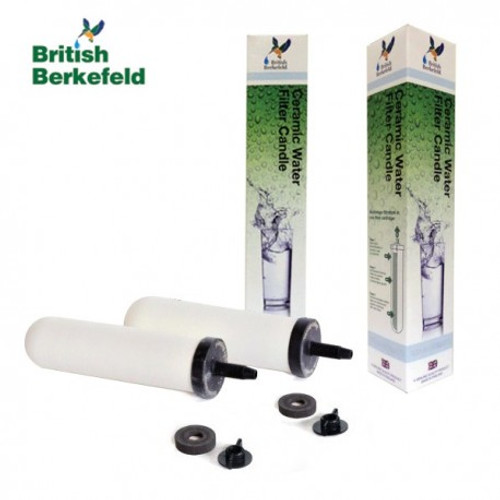Description
The Sterasyl grade ceramic is designed to remove suspended solids and pathogenic bacteria (>99. 99%). The filter elements are produced using the latest ceramic techniques to provide a hollow porous ceramic, which is fired at a temperature in excess of 1,000 C. They are designed to operate with water flow going from the outside to the inside of the element. The ceramic shell exhibits a strictly controlled pore structure, so as to provide efficient sub-micron filtration, a proven defense against hard-shelled parasites such as Cryptosporidium as well as pathogenic bacteria. The ceramic also removes other less harmful, but equally unpleasant particulate debris such as rust and dirt. Composition of the SterasylTM ceramic contains pure silver. This silver is a material designed to significantly inhibit bacteriological mitosis or grow through. The result is that bacterial growth is inhibited from occurring within the SterasylTM ceramic element (which is possible with the other ceramic filter elements). This silver content insures that filtered water contains levels well below those required by international standards. Because of the silver, SterasylTM filter elements do not require sterilization after cleaning. Additionally, the bore of the ceramic shell is filled with granular activated carbon, which enables the filter to reduce chlorine and organic chemicals while improving the color, taste and odor of the source water. The re-cleanable Super SterasylTM filter elements remove suspended solids, parasites, cysts and pathogenic bacteria (>99. 99%) and reduce organic chemicals, pesticides, herbicides, organic solvents, trihalomethanes, SOCs, VOCs and foul tastes and odors. The top of the Super SterasylTM element is closed with a unique ceramic dome. This prevents the possibility of breeching (leakage), which can occur with filtration elements that are closed with a plastic cap. From the Manufacturer The Sterasyl grade ceramic is designed to remove suspended solids and pathogenic bacteria (>99.99%). The filter elements are produced using the latest ceramic techniques to provide a hollow porous ceramic, which is fired at a temperature in excess of 1,000 C. They are designed to operate with water flow going from the outside to the inside of the element. The ceramic shell exhibits a strictly controlled pore structure, so as to provide efficient sub-micron filtration, a proven defense against hard-shelled parasites such as Cryptosporidium as well as pathogenic bacteria. The ceramic also removes other less harmful, but equally unpleasant particulate debris such as rust and dirt. Composition of the SterasylTM ceramic contains pure silver. This silver is a material designed to significantly inhibit bacteriological mitosis or grow through. The result is that bacterial growth is inhibited from occurring within the SterasylTM ceramic element (which is possible with the other ceramic filter elements). This silver content insures that filtered water contains levels well below those required by international standards. Because of the silver, SterasylTM filter elements do not require sterilization after cleaning. Additionally, the bore of the ceramic shell is filled with granular activated carbon, which enables the filter to reduce chlorine and organic chemicals while improving the color, taste, and odor of the source water. The re-cleanable Super SterasylTM filter elements remove suspended solids, parasites, cysts and pathogenic bacteria (>99.99%) and reduce organic chemicals, pesticides, herbicides, organic solvents, trihalomethanes, SOCs, VOCs and foul tastes and odors. The top of the Super SterasylTM element is closed with a unique ceramic dome. This prevents the possibility of breeching (leakage), which can occur with filtration elements that are closed with a plastic cap.
















